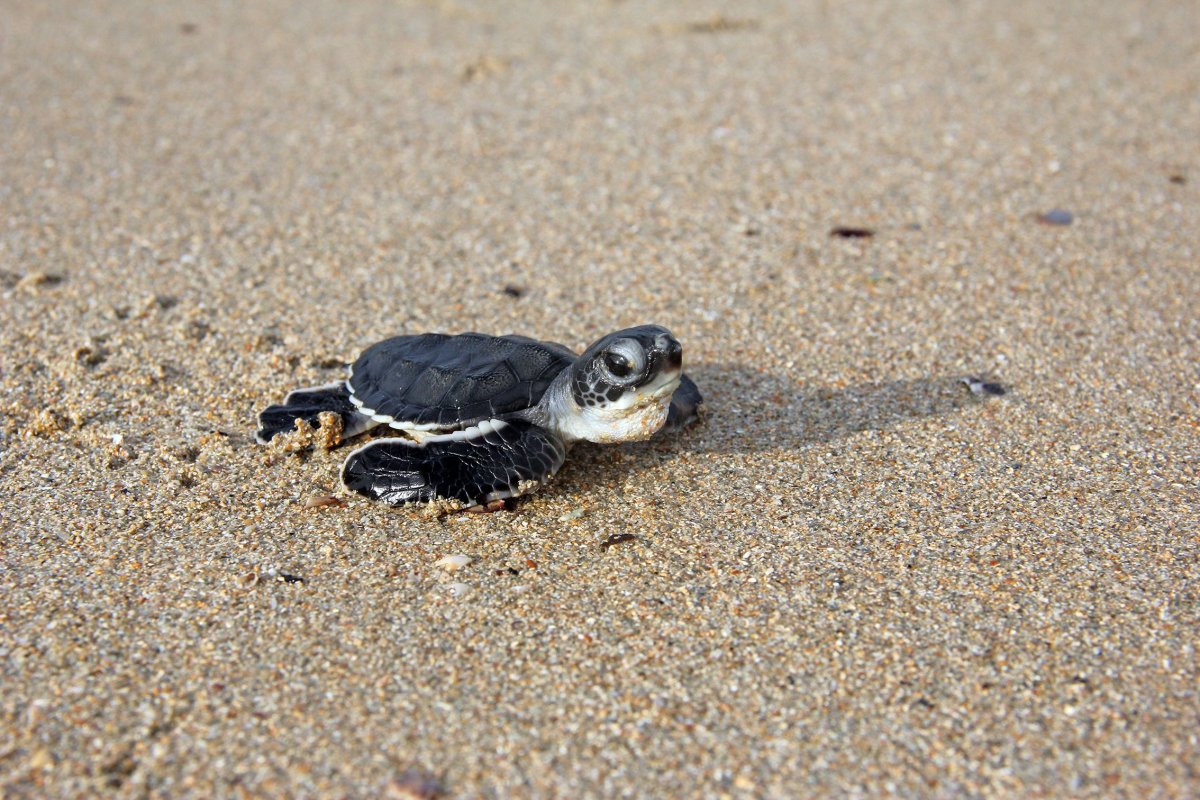The effects of climate change are profound and wide-reaching, ranging from an increase in the frequency and severity of extreme weather events to rising sea levels and mass extinctions.
But one of global warming's more bizarre manifestations is turning turtles female on a massive scale in what has been described as a "feminization" of the animal. Now, a study published in the journal Global Change Biology has estimated that up to 93 percent of hatchlings in a globally important green turtle population could be female by 2100, sparking concern for the species.
Read more: Nine facts to "shellebrate" World Turtle Day
Unlike humans and most other mammals, the sex of turtles is not determined by chromosomes but rather the temperature that an egg experiences while the hatchling is developing.
"All marine turtle species have temperature-dependent sex determination (TSD)," Rita Patricio, lead author of the study from the University of Exeter, U.K., and the Marine Environmental Sciences Centre, Portugal, told Newsweek. "This means that, instead of the sex being defined by genotype, as with humans, the temperature experienced during egg incubation will define if an embryo will develop as male or female."
"There is a 'pivotal temperature' around 29 degrees Celsius when the sex ratio is balanced: temperatures lower than this lead to more males being born, while incubation temperatures above generate more females," she said. "Because in the last hundred years the planet has been warming at an alarming rate, and it will continue to warm, at an even faster pace, natural incubation temperatures are becoming warmer, and sea turtle sex ratios are becoming more skewed towards females."
This feminization has been observed in green turtles—one of the seven species of sea turtle—but also loggerheads, leatherbacks, and hawksbills.
"There is a lack of studies on the remaining three species but given that they all use the same nesting habitat—sandy beaches—and are subjected to the same sex-determining mechanism, they are all likely to be affected by climate change," Patricio said.
Currently, it is estimated that around 52 percent of hatchling green turtles—one of seven sea turtle species—in the globally important population are female. But projections from the researchers that take into account the warmer temperatures predicted by Intergovernmental Panel on Climate Change scenarios suggest between 76 and 93 percent would be female by the end of the century.
These figures are specific to a single population of turtles at a nesting site on the Bijagós Archipelago off the coast of Guinea-Bissau in West Africa—the largest population on the continent and one of the top six worldwide. However, the researchers say that the situation will likely be similar for turtles living in other regions of the planet. The archipelago is the main breeding ground for green turtles in the South Atlantic, so conditions here are a good indicator of what's happening to the species as a whole.
The researchers say that the growing ratio of females to males could initially increase the green turtle population. But over time, the trend could threaten its existence, and indeed the species as a whole.
"Up to a certain degree having more females being born may indicate that a population is more fertile, as in time there will be more females laying eggs and a male can mate with several females," Patricio said. "However, when we have estimates of 90 percent or more females being born, we begin to worry, because this likely indicates that there won't be enough males to mate with all these females, thus the population becomes unsustainable and in time it may perish."
The team also found that rising sea levels could also submerge 33-43 percent of the current nesting areas used by green turtles in the archipelago.
"The major threats that marine turtles are currently facing include accidental catch by industrial and artisanal fisheries (bycatch), illegal harvesting, plastic pollution and climate change (which can lead to loss of nesting habitat, skewed sex ratios, loss of foraging grounds, and increased embryo mortality,)" Patricio said.
The latest study has several important implications, according to Patricio, namely that it provides a baseline for one of the top six green turtle populations worldwide.
"Because we used an integrated approach—assessing different population parameters that can be affected by climate change—we have a broader idea of how climate change can affect this population and about its resilience," she said. "If other studies use a similar approach, we will be able to make comparisons between populations and better understand how climate change will impact green turtles as a species, or marine turtles in general."

Uncommon Knowledge
Newsweek is committed to challenging conventional wisdom and finding connections in the search for common ground.
Newsweek is committed to challenging conventional wisdom and finding connections in the search for common ground.
About the writer
Aristos is a Newsweek science reporter with the London, U.K., bureau. He reports on science and health topics, including; animal, ... Read more
To read how Newsweek uses AI as a newsroom tool, Click here.








